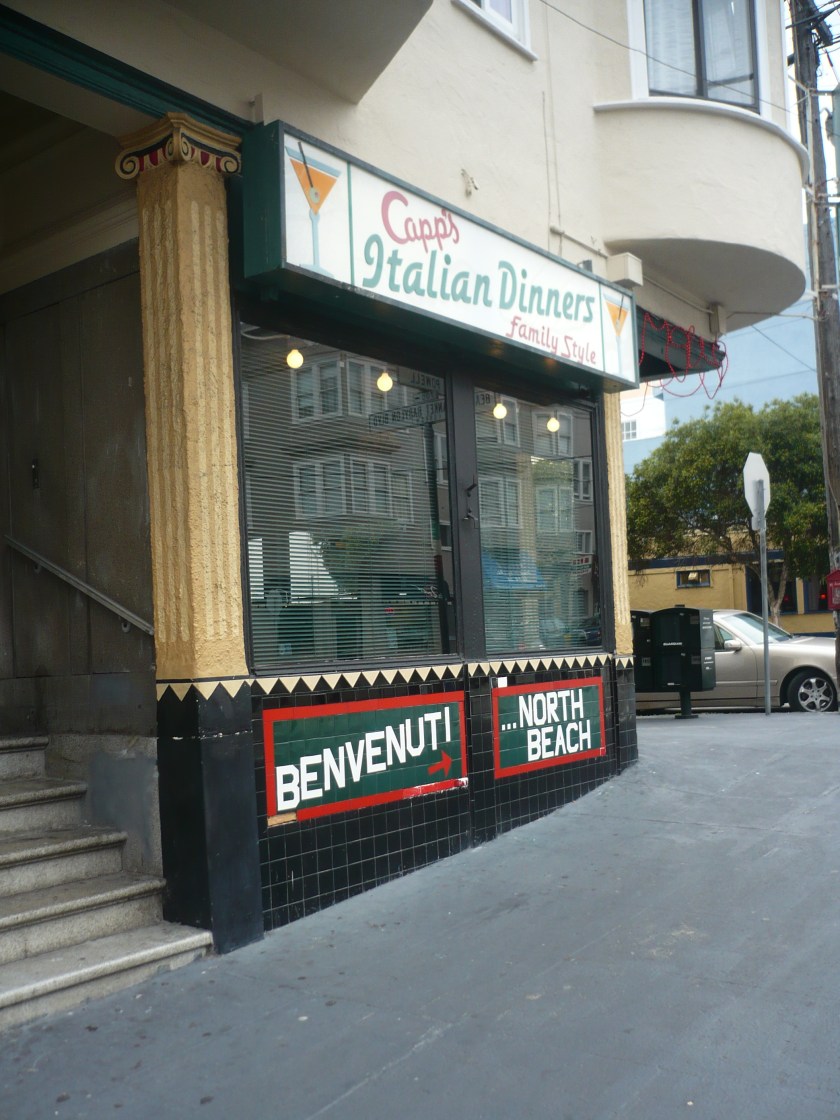When San Francisco went from sleepy Spanish outpost at the far-distant end of the American continent to the West’s first megalopolis, following the 1849 Gold Rush, the population skewed male, as demographers would say. Boarding houses rented beds, or portions of beds, and centrally-served, plentiful and simple meals to a diverse crowd of sailors, miners (and miner wannabes), soldiers, salesmen, bankers, cops, politicians.
Few still exist, or do so in name only, like the Basque Hotel, formerly an actual hotel with large dining room, now only a restaurant.
Thus began a San Francisco tradition of restaurants that served generous, family-style food. And now, some 150 years later, that tradition maybe breathing its last. Many places have disappeared and the few that remain do not appear to be long for this world.
Perhaps the king of this style of restaurant in San Francisco was the Gold Spike, which closed about six years ago, after a run of 86 years.
It was a meeting place, watering hole, feedbag, diner, neighborhood hall, party venue, lonely hearts club, museum of San Francisco history, and so much more.
My dinners at the Gold Spike were all memorable affairs. I never left without meeting people – visitors and natives alike – hoisting a few drinks, maybe sharing a dinner table. As I understand it, the Spike was unceremoniously tossed out by its landlords, so there was little time for proper goodbyes and thank yous. I do wonder if I’ll ever see those wonderful old photos again, feel the same warmth of welcome, or sit amongst the same oddly diverse crowd.
Another place I loved that has disappeared was La Pantera. The sign is, bizarrely, still there, but the place has long since departed, leaving North Beach a somewhat poorer place.
Also gone is Dante Benedetti’s New Pisa, where I had my bachelor party dinner. The New Pisa, as one reviewer suggested, “…brings to mind the essence of all that North Beach was when ‘Jolting Joe DiMaggio’ was a young man working in his family’s better known restaurant closer to the Wharf.” It was also a place where a young student could get spaghetti dinner for $5, plus a buck for a jelly-jar glass of cheap Italian red.
Two places I’m fond of carry on the tradition, Capp’s Corner and the US Restaurant.
Capp’s food can be up and down, but the atmosphere is always noisy and fun; much of the credit due to its proximity to Club Fugazi’s Beach Blanket Babylon. Pre and post show crowds keep Capp’s fun and lively.
The US Restaurant (US doesn’t stand for United States, by the way) has good food and a great family feeling, reminiscent of the best old Italian restaurants in San Francisco but isn’t really family style. Still, it does my heart good to see it busily occupying its latest spot on Columbus. It is still a great place to meet new friends and take in the smells and atmosphere of the San Francisco that was.
If you try very hard, it is still possible to find original, quirky, happy places to eat in what once was an eater’s heaven-on-earth.











